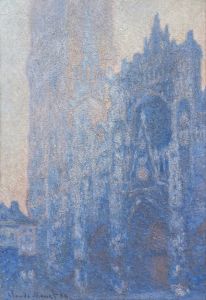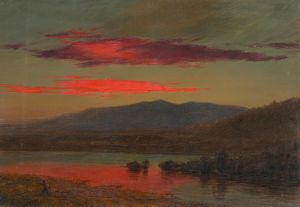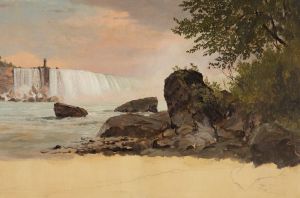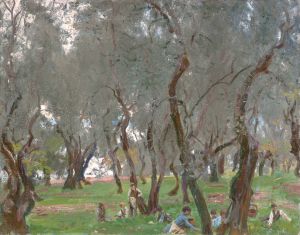
The Aegean Sea
A hand-painted replica of Frederic Edwin Church’s masterpiece The Aegean Sea, meticulously crafted by professional artists to capture the true essence of the original. Each piece is created with museum-quality canvas and rare mineral pigments, carefully painted by experienced artists with delicate brushstrokes and rich, layered colors to perfectly recreate the texture of the original artwork. Unlike machine-printed reproductions, this hand-painted version brings the painting to life, infused with the artist’s emotions and skill in every stroke. Whether for personal collection or home decoration, it instantly elevates the artistic atmosphere of any space.
Frederic Edwin Church's painting "The Aegean Sea" is a notable work by the American landscape artist, who was a central figure in the Hudson River School of painting. Completed in 1877, this painting exemplifies Church's fascination with dramatic landscapes and his meticulous attention to detail, which are hallmarks of his artistic style.
Church was known for his grand and often exotic landscapes, and "The Aegean Sea" is no exception. The painting captures the serene yet majestic beauty of the Aegean Sea, a region rich in history and mythological significance. Church's work often reflected his interest in natural phenomena and the sublime, and this painting is a testament to those themes. The composition is characterized by its expansive view, capturing the vastness of the sea and sky, with a dramatic interplay of light and shadow that enhances the sense of depth and grandeur.
In "The Aegean Sea," Church employs a vivid color palette that brings to life the tranquil blues of the water and the warm hues of the setting or rising sun, which are typical of his style. The painting also features classical architectural elements, such as ancient ruins, which are strategically placed to evoke a sense of timelessness and to connect the natural world with human history. These elements reflect Church's interest in the ancient world and his desire to convey a narrative through his landscapes.
Frederic Edwin Church was deeply influenced by his travels, and although there is no direct evidence that he visited the Aegean Sea, his work often drew inspiration from his extensive journeys. Church traveled to South America, the Arctic, Europe, and the Middle East, and these experiences enriched his artistic vision, allowing him to create landscapes that, while sometimes imagined, were grounded in a sense of realism and authenticity.
"The Aegean Sea" is housed in the collection of the Metropolitan Museum of Art in New York City. It remains an important example of Church's later work, showcasing his continued evolution as an artist and his ability to capture the beauty and complexity of the natural world. The painting is appreciated not only for its aesthetic qualities but also for its ability to transport viewers to a distant and idyllic place, reflecting Church's mastery in creating immersive and evocative landscapes.
Church's legacy as a leading figure in the Hudson River School is cemented by works like "The Aegean Sea," which continue to be celebrated for their technical skill, imaginative composition, and the ability to inspire awe and wonder in those who view them.


















